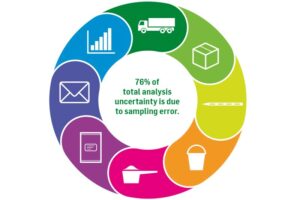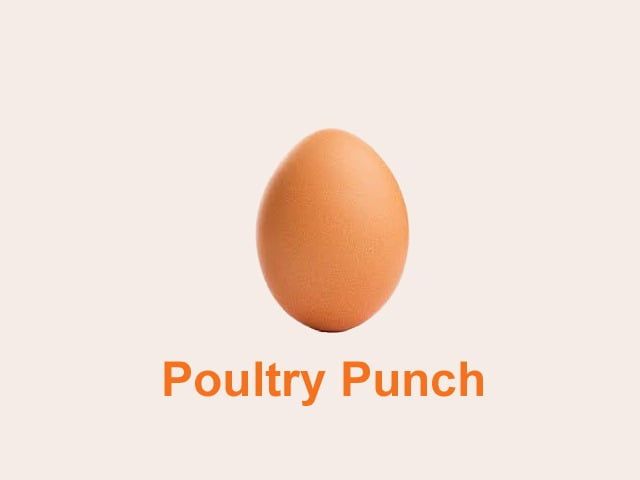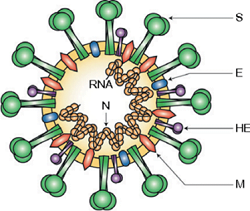8 STEPS FOR TAKING THE PERFECT SAMPLE FOR MYCOTOXIN ANALYSIS
Mycotoxins are naturally inhomogenous in their distribution. There will be hot-spots of mycotoxins in an otherwise ‘clean’ batch. To get a true analysis result, sampling is really important. Follow these steps to get your sampling right.
- Assess the size of your batch and work out how many sub samples you need to take.
For example, 1 ton of raw material = 1 kg of aggregate sample (10 x 100 g samples). The exact amount of sample depends on lot type and size according to EC Regulation No 401/2006. - Check the sampling method according to the material being sampled.
Your BIOMIN representative can provide you with the best practices for each material, making sure you collect and store your sample correctly. - Use the right equipment for the job.
There are lots of tools out there so do your research and make sure you have the right tool for the job. - Take incremental samples and mix them together thoroughly to form an aggregate sample.
Make sure incremental samples are thoroughly mixed together so that all components are homogeneously distributed. - Take the samples you will send off for analysis from your aggregate sample.
The laboratory carrying out the analysis will tell you how much sample they need. The general recommendation is at least 1 kg. Make sure you send them at least this amount, if not more. And consider storing some material for future reference too. - Make sure the bag or container is well sealed, and labelled with all the necessary information.
Your BIOMIN representative can provide sampling bags or advise on other sample containers that avoid altering the quality of the sampled material. - Post your sample off to the laboratory the same day.
Try not to send samples late in the week as they might be stuck in the post office over the weekend. Instead, store samples in a fridge or freezer and post them the following week. - Enjoy the benefits of receiving accurate and reliable mycotoxin analysis results.
But your sampling journey doesn’t end there. Take regular samples to stay well informed about the mycotoxins in your raw materials or finished feeds
76% of total analysis uncertainty is due to sampling error.
Impact of Mycotoxin presence in feed material –
Mycotoxins’ general effects include impaired nutrient uptake, immune suppression and decreased performance. They can compromise several key functions of the GIT including decreased surface area available for nutrient absorption, modulation of nutrient transporters, and/or loss of barrier function. Several mycotoxins act as inhibitors of protein synthesis; many specifically target rapidly dividing and activated cells which are predominant in the gut epithelium. Others increase the persistence of intestinal pathogens and potentiate intestinal inflammation.
Yes, even low levels of mycotoxins can harm the poultry industry. This is especially so when several mycotoxins co-occur in feeds, when exposure to several different pathogens are often not adequately controlled by biosecurity measures and when the usage of by-products in feeds further contributes to the total load of inflammatory agents to which animals are exposed.
Mycotoxin risk management tools are available to mitigate the negative impacts of mycotoxins in animal health and performance. Due to its long-standing R&D commitment, BIOMIN is the first, and so far, only feed additive company to have successfully registered in the EU a technological feed additive that is capable of reducing the negative impacts of mycotoxins in animals.




